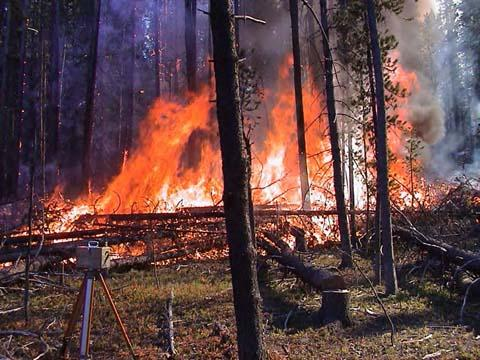Perhaps one of the most critical decisions made by firefighters during daily fire management operations is the identification of suitable safety zones.
New research is focused on measuring and predicting the cumulative impact of convective and radiant energy transfer on safety zone shape, size and location when the safety zone and/or fires are located on slopes or are burning under the influence of wind. Measurements and newly developed theoretical modeling tools are being used to explore the expected range of slopes, safety zone locations and fire intensities.
Tools/Resources:

